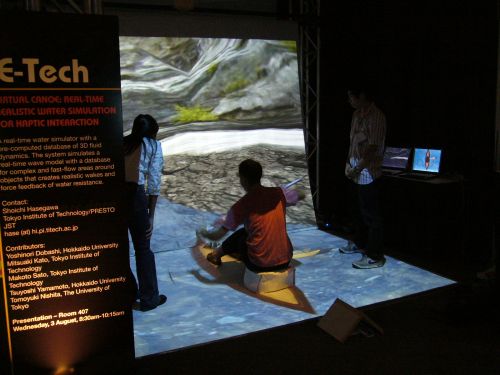
more images
 more images |
A real-time water simulator with a pre-computed database of 3D fluid dynamics. The system simulates a real-time wave model with a database for complex and fast-flow areas around objects that creates realistic wakes and force feedback of water resistance. |
| Shoichi Hasegawa | Tokyo Institute of Technology / PRESTO JST |
| Yoshinori Dobashi | Hokkaido University |
| Mituaki Kato | The University of Tokyo |
| Makoto Sato | Tokyo Institute of Technology |
| Tsuyoshi Yamamoto | Hokkaido University |
| Tomoyuki Nishita | The University of Tokyo |